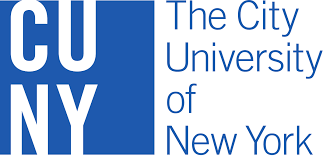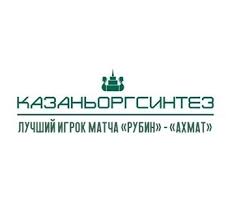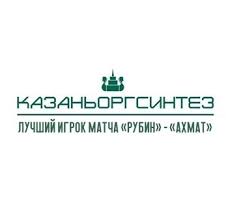Day :
- Workshop on
Location: Andromede
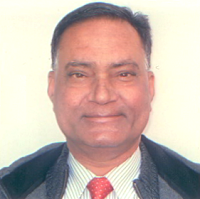
Chair
Virinder Parmar
The City University of New York, USA
Session Introduction
Christophe Len
Chimie ParisTech - PSL University, France
Title: Recent advances and future projections on sustainable development for bio-based furan production

Biography:
Christophe Len has received his PhD in 1995 from the Université de Picardie Jules Verne followed by a Post-doctoral Fellow at the University of Hull (England). In 1997, he became Assistant Professor at UPJV and was promoted to full Professor in 2004 at the Université de Poitiers (France). In 2010, he moved as full Professor at the Université de Technologie de Compiègne - UTC (France) and in 2017, he developed his research in Chimie ParisTech (France). He has published almost 180 original publications and review articles, eight book chapters and nine patents. Among recent awards and recognition to his scientific career, he was promoted Honorary Professor of the University of Hull, England (2012-2018), Honorary Life Fellow of Indian Society of Chemists and Biologists (ISCB, 2014), Fellow of the Association of Carbohydrate Chemists and Technologist of India (ACCTI, 2015) and Fellow of the Royal Society of Chemistry (FRSC, 2015). In 2017, he has been honored with 2017 Glycerine Innovation Award sponsored by the American Cleaning Institute and the National Biodiesel Board. His current research explores organic chemistry and catalysis applied to biomass.
Abstract:
The concepts of sustainable development, bio-economy and circular economy are increasingly being applied to the synthesis of molecules of industrial interest. Among these molecules, furfural as a platform molecule is the subject of various research approaches to improve its synthesis and productivity, and also to extend its transformation for the production of molecules of interest. Due to the current momentum in promoting green chemistry for sustainable development, chemists have recently established catalytic reactions based on alternative technologies such as continuous flow. The present study showed recent breakthroughs obtained in the production of furfural, hydroxymethylfuran, methylfuran, methyl levulinate and g-valerolactone starting from lignocellulose in the presence of homogeneous catalysts and heterogeneous catalysts using either batch process or continuous flow process. Various reaction parameters in dependence of time such as temperature, catalyst and feedstock loadings as well as solvent types have been optimized. Conception, synthesis and physico-chemical properties will be detailed.
Virinder Parmar
The City University of New York, USA
Title: Biocatalytic synthesis of novel polymeric nanomaterials: Applications in Health and Industrial Sectors
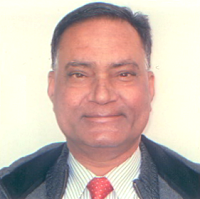
Biography:
Virinder S Parmar has completed his BSc Honors, MSc and PhD from the University of Delhi (India), and has worked for nearly 10 years as a Post-doctoral/Visiting Scientist at Cornell University, Harvard University, University of Massachusetts Lowell (UML), NYU-Poly and MIT (USA); the University of Basel (Switzerland) and the Imperial College of Science, Technology and Medicine (London, UK). He is currently a Faculty member in the Department of Chemistry and Environmental Science at Medgar Evers College, The City University of New York (Brooklyn, New York, USA). He has been a Faculty at St. Stephen’s College and the University of Delhi (India) for 44 years, he was recently retired as Full Professor of Chemistry and has served as Head of the Department of Chemistry and as Chairman of the Board of Research Studies, and Provost of Gwyer Hall at this University. He has been an awardee of Medals for Excellence in Research from the Chemical Research Society of India (CRSI, Bangalore) for the year 2001 and of the Indian Society of Chemists and Biologists (ISCB, Lucknow) for the year 2009. He has been a recipient of the Academic Staff Award from the EXPERTS II Consortium of the European Union (EU) in December 2012 and April 2013. His research interests include: Green/Sustainable Chemistry, Nanotechnology, Organic Synthesis, Nucleic Acid Chemistry, Advanced Materials, Medicinal Chemistry, Biocatalysis and the Chemistry of Natural Products. He has delivered invited/plenary lectures at 147 international meetings and has given 398 research seminars at 293 Institutions in 31 countries across the globe. He is the Executive Editor of the Journal Biocatalysis and Biotransformation, and has been on the Editorial Boards of the Journals: ChemSusChem, Mendeleev Communications, Indian Journal of Chemistry, Natural Product Communications, Arkivoc, Molecules and ISRN Medicinal Chemistry. He is a regular reviewer for several journals published by the American Chemical Society, the Royal Society of Chemistry (London), Elsevier & Wiley-VCH, etc. and also a member of the IUPAC’s Subcommittee on Biomolecular Chemistry and the Interdivisional Committee on Green Chemistry for Sustainable Development (ICGCSD).
Abstract:
We have developed a chemo-enzymatic synthesis for obtaining novel amphiphilic polymeric nanoparticles based on PEG having a broad range of additional chemical functionalities under mild “greener” conditions. Simplicity and versatility of this method for the synthesis of highly functionalized amphiphilic polymeric nanoparticles with the advantage of “green appeal” further enhance its applications as an important strategy. These unique alternating copolymer micellar nanoparticles have been used successfully for the encapsulation of a large number of drugs of different classes and delivery vehicles targeted to human cancer cells expressing the underglycosylated mucin-1 antigen, which is found on almost all epithelial cell adenocarcinomas. The solubility of the chemotherapy drug doxorubicin increased by encapsulation in these nanoparticles, and cellular uptake, and hence cancerous cell death, was enhanced as compared to that with the free drug. The encapsulated taxol and doxorubicin showed significant enhanced activity against neuroblastoma cancer cells than anti-cancer drugs alone, and doxorubicin encapsulation showed three to six times better activity against pancreatic cancer cells. Nanospheres with different linker molecules such as naturally occurring aspartic acid and glutamic acid have also been prepared to assure non-toxic character of these nanomaterials and their biodegradability. The surface of these nanospheres is non-immunogenic as they are rich in PEG chains which do not interact with proteins. These polymers self-assemble in water to produce nanospheres with a typical diameter of 10-70 nanometers. Critical micelle concentration for these micelles is low (~0.25 millimolar). These materials are non-toxic; 60 g material per kg body weight can be tolerated. A novel nanotechnology platform for in vivo imaging and delivery of multifunctional therapeutics of cancer has also been designed based on perfluorinated amphiphilic copolymers. These nanoprobes are highly unique because of their ability to image and treat the cancer tumors by delivering the drugs to the cancer tumor sites. The methodology developed for the synthesis of perfluorinated copolymers is highly flexible and efficient. The in vitro and in vivo studies on these nanoprobes are in progress. Recently we have synthesized cationic polymers that constitute of guanidine functional groups and poly (ethylene glycol) units. Because of their strong basic character, guanidines are fully protonated under physiological conditions. The positive charge thus imposed on the molecule forms the basis for specific interactions between ligand and receptor or enzyme and substrate, i.e. as ammonium cations, they may bind to polyanionic DNA’s and also to negatively charged cell surfaces to trigger endocytosis. Thus they may serve as gene siRNA delivery vehicles in order to cure many hereditary diseases and treat acquired diseases resulting from either multigenic disorders or foreign viral genes. The bio-derived non-crystallizable polymeric materials were used in formulating quasi-solid electrolyte compositions and incorporated into flexible dye-sensitized titanium oxide solar cells (DSSC). It was observed that the solar conversion efficiency of quasi-solid electrolytes incorporated solar cells depends strongly on the polymer microstructure used in formulating the redox electrolyte and our polymeric materials showed photovoltaic efficiency of up to 9%. Further, highly useful novel, non-toxic “environment-friendly” non-halogenated flame retardant organo-silicone polymeric materials using the above environmentally benign “green” biocatalytic technologies have been developed. These show superior properties than commercial flame retardant materials. These results shall be presented in the talk.
Michele Vittadello
The City University of New York, USA
Title: Cytochrome c oxidase oxygen reduction induced by Cytochrome c onto nickel coordination surface based on graphene oxide in suspension

Biography:
Michele Vittadello has received his PhD in Chemical Sciences in 2003 from the University of Padua in Italy with Dr. Vito Di Noto. He spent two years (2003-2005) as a Post-doctoral Fellow in the lab of Dr. Steve Greenbaum at the City University of New York - Hunter College. He was a Post-doctoral Research Associate in the Materials Science and Engineering Department at Rutgers, The State University of New Jersey (2005-2008). While at Rutgers, he was awarded funding by the Rutgers Energy Institute (2007-2008). He is primarily interested in the investigation of fundamental physical-chemical properties of nanomaterial, biomaterials and materials with potential applications in the fields of energy storage/generation, biotechnology and radio-remediation. In the Fall of 2008, he joined the faculty at CUNY - Medgar Evers College as an Assistant Professor of Chemistry and was promoted to Associate Professor with tenure in the Fall 2015. He has held visiting positions at Rutgers University (Department of Chemistry) and Princeton University (Department of Chemistry). His work appeared in several articles published in international journals such as J Phys Chem, Macromol Chem and Phys, Electrochimica Acta, Journal of the Electrochemical Society, Solid State Ionics, J. Power Sources, Inorganica Chimica Acta, ChemSusChem, and Carbon.
Abstract:
In vitro investigations on isolated components of the mitochondrial electron transport chain are expected to shed new light on the plethora of bioenergetic functions carried out by mitochondria, affecting the performance of living organisms. This study is focused on assessing the biocompatibility of graphene oxide (GO) derivatives with His-tagged cytochrome c oxidase (CcO), expressed and purified from Rhodobacter sphaeroides using the Gibson assembly method. As prepared GO was enriched with carboxylic acid groups yielding carboxylated GO (CGO). CGO was functionalized with nitrilotriacetic acid (NTA) yielding CGO-NiNTA, in the presence of Ni2+ ions. We investigated the reaction of horse-heart cytochrome c (Cyt c) with free CcO and CGO-NiNTA-CcO coordination complexes in suspension. Kinetic studies by UV-Visible absorption spectroscopy confirmed that free CcO oxidizes Cyt c and provided a similar indication for immobilized CcO. However, oxygen-consumption measurements using a Clark-type electrode suggested that CGO-based supports are capable of oxygen reduction reaction (ORR), especially in the presence of Ni2+ coordination centers. The ORR caused by immobilized CcO could be clearly distinguished from that of CGO-NiNTA in the presence of Cyt c and dithiothreitol (DTT) as a sacrificial reducing agent. The results indicate that while the protein content is about 3% by mass with respect to the support, the contribution to the oxygen consumption activity ranges from 39.3% to 71.0%, depending on the concentration of DTT. This finding indicates that the support stabilizes the free enzyme which, while capable of Cyt c oxidation, is unable to carry out oxygen consumption in solution. The turnover rate was as high as 599 O2 molecules per CcO unit per second.
- Green Chemistry and Technology | Environmental Chemistry and Pollution Control | Green Polymers | Green Materials
Location: Andromede
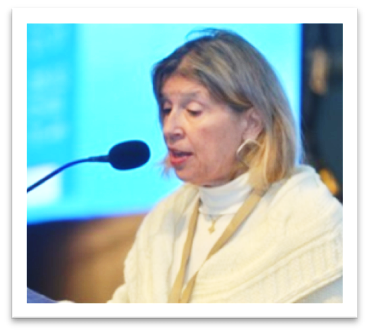
Chair
Marta I. Litter
National Atomic Energy Commission, Argentina
Session Introduction
Boopathy Gnanaprakasam
Indian Institute of Science Education and Research, India
Title: Sustainable synthesis of reactive intermediates under continuous fl ow
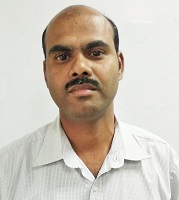
Biography:
Boopathy Gnanaprakasam has obtained his BS (1999) and MS (2001) degree’s in Chemistry from the University of Madras, India. Lately, he obtained his PhD (2008) on the topic of “Synthetic methods towards terpenoids, steroids and macrocycles” from Bhavnagar University. Subsequently, he has completed a couple of Post-doctoral Program from Weizmann Institute of Science, Israel (September 2008-August 2011) under Professor David Milstein and AVH Fellow from Gottingen University, Germany (September 2012-February 2014) under Professor Lutz F Tietze. Prior to AVH Post-doctoral Fellowship, he joined as a Scientist at ICES-A*STAR, Singapore (December 2012-July 2013). After Post-doctoral program, he began his independent career as an Associate Professor at SRM Research Institute (March 2014-June 2014). In late 2014, he moved to IISER-Pune in the Department of Chemistry where he currently holds the rank of an Assistant Professor. His research interests include development of metal catalyzed sustainable/green synthetic methods for the natural products, continuous flow synthetic methodology for bioactive molecules and fluorinated organic scaffold. His recent research developed sustainable synthesis of peroxides, aldehydes and vinylogous esters.
Abstract:
In view of global concern, pharmaceuticals and fine chemical industries are increasingly seeking to replace stoichiometric reagents used in synthetic transformations by catalytic routes, in order to develop greener, safer, and more economical processes. Therefore, there is an immense interest for the discovery of new chemical process with sustainability. Integration of catalysis for the sustainable synthesis of small molecules, specialty chemicals and natural products are still more demanding research areas. Presently, continuous flow chemistry has become a new chemical processing technology for the chemical synthesis in a sustainable approach by which many disadvantages of traditional batch-process can be eradicated. Continuous flow methods are generally more efficient than conventional batch conditions and advantages associated with the flow relative to the batch, are the high surface-to-volume ratio, increased mass transfer, improved safety, more reproducibility, space and power savings, the ability to conduct multistep sequences, improved product quality with better yields, and easy scale-up. To this direction, we have developed a continuous flow process for the various chemical transformations utilizing environmentally benign catalyst. Thus, we have developed new catalytic reactions for the C-H peroxidation and Nef reaction under continuous flow using Fe-heterogeneous catalyst having several advantages over the batch/classical reactions. Furthermore, we have also developed continuous flow process for the synthesis of the versatile vinylogous ester intermediate and explored their application in the transetherification under continuous flow process using Fe-catalyst/Amberlyst-15. In addition we have also developed hydrolysis of vinylogous ester under continuous flow which can avoid the use of hazardous acidic environment. All the above research investigations will be presented.
Andrey Norov
JSC “The Research Institute for Fertilizers and Insecto-Fungicides, Russia
Title: Development and implementation of fl exible technology of granular NPKS / PKS-fertilizers of slow release with a controlled dissolution rate

Biography:
Andrey Norov has graduated from D. Mendeleev’s University of Chemical Technology in Russia, for over 25 years, he had been working at Mineral Fertilizers Plants. Since April 2007, he has been working for JSC “NIUIF”, at the present moment his job title is an Industrial Technology Director. He has obtained his PhD in Engineering Science. He is an Honorable Chemist of the Russian Federation, and also he got governmental and industry-related awards. He is an author of 73 research articles and publications, and 27 patents in the field of phosphorus-containing fertilizers technology. He took part as a Speaker in 21 international conferences and symposiums.
Abstract:
JSC “NIUIF”, the oldest (founded in 1919) and the only one in Russia scientific-research institute for phosphorus-containing fertilizers, developed a novel flexible technology of production of NPKS/PKS-fertilizers of slow release with a controlled dissolution rate and nutrient assimilability into the soil solution. These fertilizers are environmentally safe, non-radioactive; practically do not contain compounds of harmful heavy metals (arsenic, cadmium, lead, mercury, chromium, etc.). Besides the main nutrients (nitrogen, phosphorus and potassium) they also contain sulfur and calcium in a plant assimilable form. The dissolution rate is regulated by changing the ratio between the water-soluble and assimilable forms of phosphorus, as well as by addition of ammonium salts. The technology is waste-free, moreover, it allows to process wastes and by-products of other production units: phosphogypsum, conversion chalk, cake from sodium tripolyphosphate production, sludge sand, etc. These fertilizers were successfully tested by the International Institute of Plant Nutrition and in the Russian Agricultural Academy named after K.A. Timiryazev and everywhere its high agronomic efficiency was proved. The technology is protected by three patents of the Russian Federation. Based on the design documentation developed by JSC “NIUIF”, NPKS/PKS-fertilizer plant was built and successfully set into operation at Metakhim plant (Volkhov city, Leningrad Region).
Maksim Tcikin
JSC “The Research Institute for Fertilizers and Insecto-Fungicides, Russia
Title: Ammonium sulphate production from by-products of wet phosphoric acid process - fl uosilicic acid and phosphogypsum
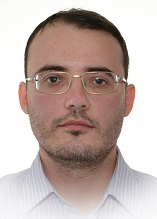
Biography:
Maksim Tcikin is graduated with Honors from the D. Mendeleev University of Chemical Technology of Russia. He is a R&D and Business Development Manager at JSC “The Research Institute for Fertilizers and Insecto-Fungicides” (JSC “NIUIF”), which belongs to PhosAgro Group. He is a Co-author of six patents in the field of phosphate raw materials processing and fertilizer technology.
Abstract:
At present time many producers of phosphate fertilizers faced the challenge of processing and recycling of fluosilicic acid (FSA). It is a pollutant of a primary concern and cannot be landfilled without being treated. Existing best available techniques for processing FSA involves production of fluoride salts which are limitedly applied. As a result, the acid is neutralized with lime. This method of treatment ultimately increases the amount of solid waste sent for storage. Ð better environmental alternative of this method is to use technological solutions which can allow to process FSA to produce substances required for chemical industry. NIUIF has developed a new technique of co-processing of phosphogypsum and FSA by-products to produce ammonium sulphate and fluoride containing precipitate. This process is based on neutralization of FSA by ammonia in presence of phosphogypsum. Gypsum, the main component of phosphogypsum, is used for precipitation of F in form of calcium fluoride. After neutralization and precipitation the slurry is separated into solution of ammonium sulphate and mixture of calcium fluoride, gypsum and silica to be used in the cement industry. Water solution of ammonium sulphate with low content of impurities can be used for production of NS, NPS and NPKS fertilizers.
Wai-Hung Lo
The Hong Kong Polytechnic University, Hong kong
Title: Effective removal of anionic contaminants in aqueous solutions by metalalginate immobilized fungal materials
Biography:
Dr. Wai-Hung Lo is Associate Professor in the Department of Applied Biology and Chemical Technology at the Hong Kong Polytechnic University. He received his B.Sc. and M.Sc. in Chemical Engineering from Massachusetts Institute of Technology, Ph.D. from Purdue University and postdoctoral training at Cornell University, USA. His research interests include pollution control, waste conversion, anti-cancer drug development and adsorption. He was recognized for his research achievements by receiving international Gold Medal Awards for the inventions of potent anti-cancer drugs, and Technology Transfer Awards, President’s Award, and High Impact Achievement Award for Research Achievement from the Hong Kong Polytechnic University.
Abstract:
The contamination of drinking water resources with toxic anions such as fluoride, arsenate and chromate presents severe threats to both human and environment. Conventional water treatment techniques have drawbacks such as inefficiency in anion removal, high capital and operational costs. Biosorption and bioremediation can offer efficient and affordable alternatives for the removal of anions. Mucor rouxii (MR), a filamentous fungus, was examined as a potential biosorbent for the removal of anions in aqueous phase. This fungal biomass was further immobilized in alginate beads and used for the removal of fluoride, arsenate and chromate. We investigated the effects of different cross-linking metal ion centers such as Ca(II), Ce(III), Ce(IV), Sn(IV) and Zr(IV), and doping amino-functionalized silica on the anion removal efficiency of metal-alginate immobilized MR. Among the different metal-alginate immobilized MR, the Zr(IV)-alginate immobilized MR (Zr-AIM) exhibited the most efficient adsorption towards fluoride and arsenate, whereas silica doped Zr-AIM (SZr-AIM) demonstrated the most efficient chromate adsorption. Batch adsorption experiments were conducted to determine the influences of operating conditions including contact time, solution pH, initial anion concentrations and biosorbent dosage on the anion adsorption efficiency of Zr-AIM and SZr-AIM. The integrated results from SEM-EDX, FTIR and XPS analyses and adsorption studies revealed that the Cr(VI) removal mechanisms by SZr-AIM mainly involved: (i) adsorption of Cr(VI) onto the Zr(IV) that crosslinked the alginate polymers through electrostatic interactions, and (ii) partial reduction of the adsorbed Cr(VI) to Cr(III) on the biomass surface. Overall, the Zr-AIM and SZr-AIM are efficient biosorbents for the removal of fluoride, arsenate and chromate from contaminated water and wastewater.
Elena Prokopeva and Kseniya Tsyglyaeva
PJSC "Kazanorgsintez", Russia
Title: Forecast of the biopolymers future in Russia
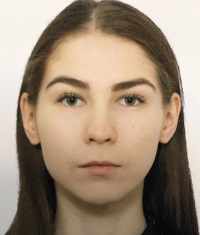
Biography:
Kseniya Tsyglyaeva and Elena Prokopeva graduated from the Kazan National Research Technological University with receiving a bachelor's degree in Innovative Technologies in Chemistry. Also we were trained at the technical University of Ostrava (Czech Republic) in quality management. Currently Kseniya Tsyglyaeva is studying in “Commercialization of R&D Results”. Elena Prokopeva is studying the specialty "Machines and apparatus of industrial ecology". They will receive a master's degree in 2020.
Both of them work in Kazanorgsintez, PJSC on the position of sales economists of Analysis and Planning Department. Kazanorgsintez, PJSC is one of the key chemical players in the Russian economy with a 60-year history. Our company ranks third in the list of the most open and transparent companies according to the data provided by the Russian office of Transparency International e.V. (TI), the international non-government organization. At this moment Kazanorgsintez, PJSC has a project of the Polyhydroxyalkanoates’(PHA) bioplastic production.
Abstract:
Polyhydroxyalkanoates (PHA) are the most commemorated of biodegradable bioplastics due to good physical and mechanical properties, fast and complete biodegradability. PHA is a group of biodegradable and biocompatible polymers, which consists of more than nine groups, including polyhydroxybutyrate (PHB) and polyhydroxyvalerate (PGV). They are synthesized enzymatically by bacteria as a reserve source of energy. The main field of application of PHA-plastics is the manufacture of bulk products, packaging and 3D printing, depends on mixing PHB with various polymers. And also there are some fields of its using which will be available as piece and mass goods only with significant marketing support. Now the biopolymer market in Russia is only being formed, so there are only approximate indicators for several industries, but one of the goals of this study is also to characterize the biopolymer market in Russia. Some aspects of the study also relate the possibility of legislative lobbying for the use of bioplastics in Russia.
Elena Prokopeva and Kseniya Tsyglyaeva
PJSC "Kazanorgsintez", Russia
Title: The properties of Polyhydroxybutyrate and fi elds of its application

Biography:
Kseniya Tsyglyaeva and Elena Prokopeva graduated from the Kazan National Research Technological University with receiving a bachelor's degree in Innovative Technologies in Chemistry. Also we were trained at the technical University of Ostrava (Czech Republic) in quality management. Currently Kseniya Tsyglyaeva is studying in “Commercialization of R&D Results”. Elena Prokopeva is studying the specialty "Machines and apparatus of industrial ecology". They will receive a master's degree in 2020.
Both of them work in Kazanorgsintez, PJSC on the position of sales economists of Analysis and Planning Department. Kazanorgsintez, PJSC is one of the key chemical players in the Russian economy with a 60-year history. Our company ranks third in the list of the most open and transparent companies according to the data provided by the Russian office of Transparency International e.V. (TI), the international non-government organization. At this moment Kazanorgsintez, PJSC has a project of the Polyhydroxyalkanoates’(PHA) bioplastic production.
Abstract:
Polyhydroxyalkanoates (PHA) are the most commemorated of biodegradable bioplastics due to good physical and mechanical properties, fast and complete biodegradability. PHA is a group of biodegradable and biocompatible polymers, which consists of more than 9 groups, including polyhydroxybutyrate (PHB) and polyhydroxyvalerate (PGV). They are synthesized enzymatically by bacteria as a reserve source of energy. PHA are thermoplastic linear polyesters based on aliphatic hydroxyacids and consist of more than 9 groups. Among the most significant representatives include polyhydroxybutyrate (PHB) and polyhydroxyvalerate (PGV). PHB derives from renewable sources and can degrade in different environments to carbon dioxide and water. PHB properties can be varied by mixing it with other polymers. For example, blending PHB with PLA, you get a good blend for 3D printing and package production. And blending PHA with PBAT make the polymer more flexible. The main field of application of PHA-plastics is the manufacture of bulk products, packaging and 3D printing, depends on mixing PHB with various polymers. And also there are some fields of its using which will be available as piece and mass goods only with significant marketing support.

